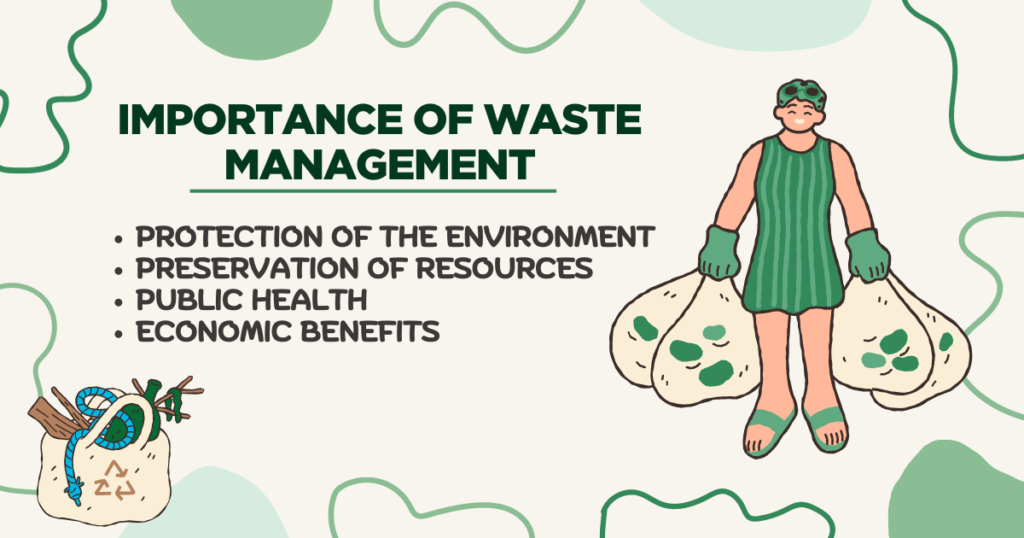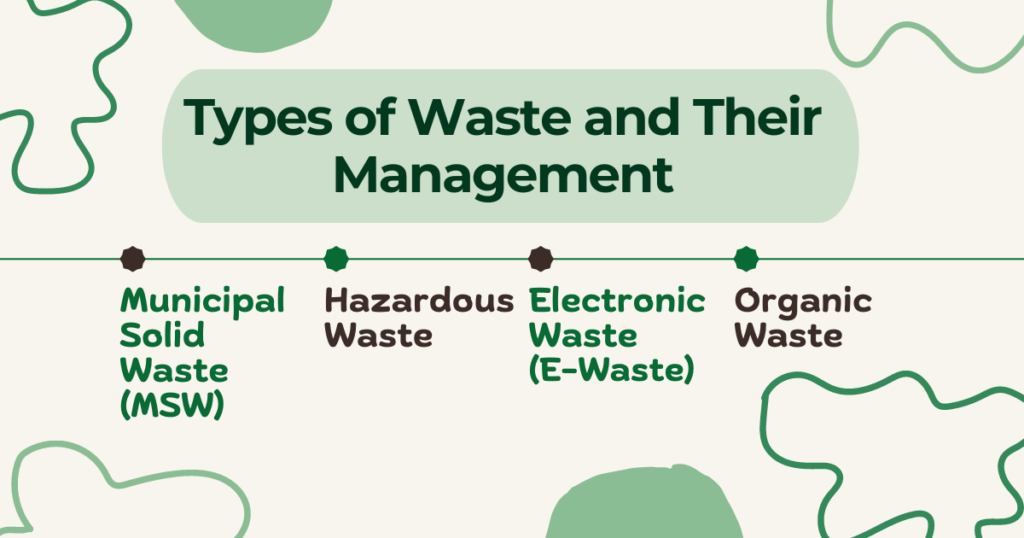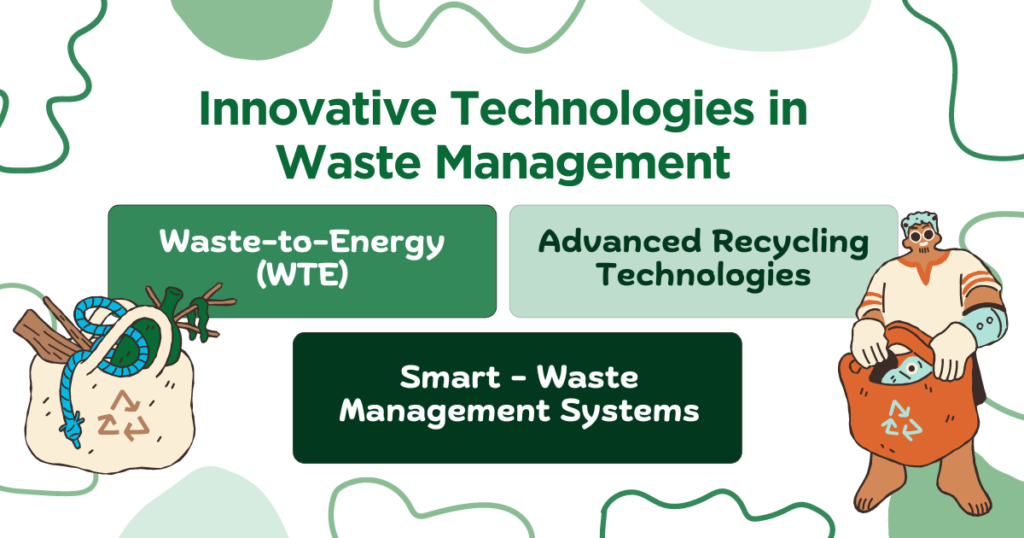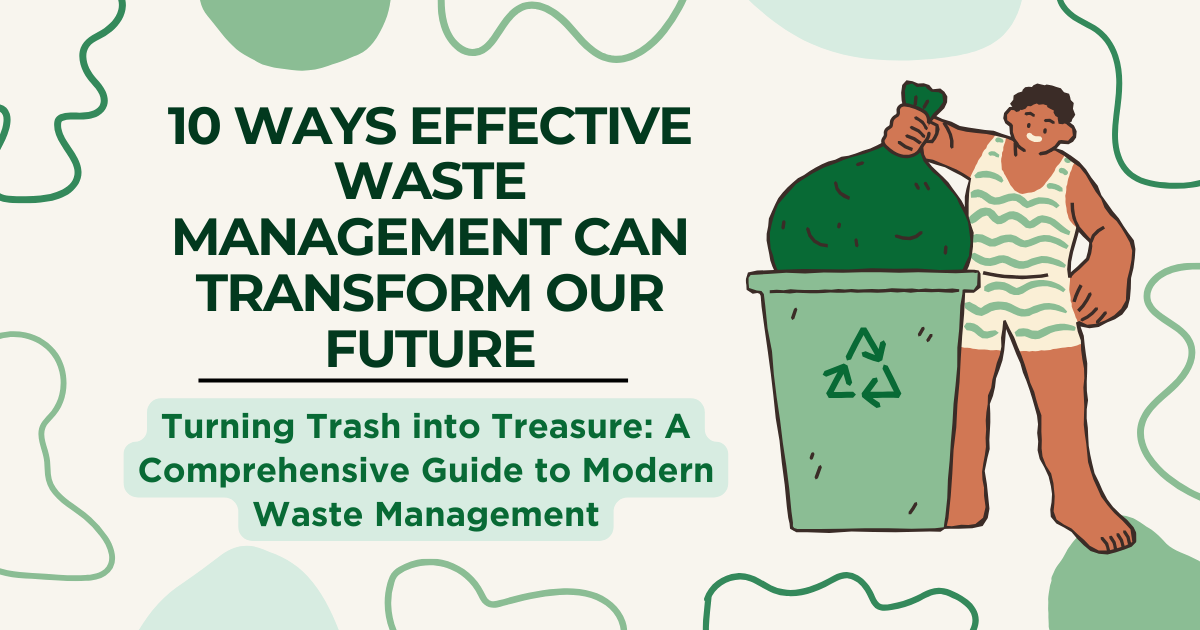Turning Trash into Treasure: A Comprehensive Guide to Modern Waste Management
Waste management,it includes the gathering, moving, processing, and discarding of waste products, is an essential component of contemporary society. In order to maintain resource conservation, environmental protection, and public health, efficient waste management is becoming more and more important as our population and industrial activity increase. This blog will examine waste management from a variety of angles, including its significance, varied approaches, real-world applications, and cutting-edge technologies influencing this vital sector in the future.
The Importance of Waste Management
Effective waste management is fundamental for several reasons:

- Protection of the Environment: Poor waste management pollutes the air, water, and land. For example, plastic waste in the water kills marine life, and methane, a strong greenhouse gas, is released from landfills. Waste management helps to reduce these adverse effects.
- Preserving the Resources: Numerous waste products, such as plastics, paper, and metals, can be recycled and utilized again. Recycling goods minimizes the need to extract raw materials, conserves natural resources, and uses less energy.
- Public health: Pests and diseases are drawn to cumulated garbage, which poses serious health dangers. Disease incidence is decreased and hygienic conditions are guaranteed by effective waste management.
- Economic Benefits: Recycling and energy recovery bring in money and jobs for the waste management sector. Over time, communities can also save money by implementing efficient waste management systems.
Types of Waste and Their Management
Waste can be categorized into several types, each requiring specific management strategies:

-
Municipal Solid Waste (MSW)
Household waste such as food scraps, paper, plastics, and metals is included in municipal solid waste, also referred to as trash or rubbish. MSW management is divided into multiple phases:
– Collection and Transportation: Waste is hauled to processing or disposal facilities after being gathered from homes and businesses.
– Segregation: Trash is divided into recyclable, biodegradable, and non-recyclable categories at the plant.
– Processing: Organic waste is delivered to composting facilities, recyclables to recycling plants, and non-recyclables to landfills or incinerators.
Example: Composting and recycling are required under a comprehensive MSW policy implemented by the city of San Francisco. As a result, the city diverts about 80% of its waste from landfills, significantly reducing its environmental effect.
-
Hazardous Waste
Chemicals, batteries, and medical waste are examples of materials that are hazardous, combustible, corrosive, or reactive. When handling hazardous trash, extra caution must be taken:
– Identification: Ordinary garbage is segregated from hazardous waste via identification.
– Storage and Transportation: It is driven to disposal sites by specialized vehicles and kept in safe containers.
– Treatment and Disposal: Before being disposed of, hazardous waste is treated to eliminate any dangerous qualities. Among the techniques are secure landfilling, chemical treatment, and incineration.
Example: The Love Canal disaster in the 1970s raised awareness of the dangers of improperly disposing of hazardous waste. The health of the inhabitants was harmed by chemicals that leaked from a landfill and seeped into the neighborhood, leading to stricter regulations on the management of hazardous waste.
-
Electronic Waste (E-Waste)
Televisions, cellphones, and other electronic equipment that have been abandoned are considered e-waste. Because these gadgets include valuable metals and dangerous compounds, e-waste treatment is essential:
– Collection and Recycling: Precious metals like copper, silver, and gold are removed from e-waste before it is transported to specialized recycling facilities.
– Safe Disposal: In order to avoid contaminating the environment, toxic materials like lead and mercury are disposed of carefully.
Example: The goal of Japan’s “Urban Mining” project is to extract valuable metals from electronic waste. The tremendous success of this program has allowed for the recovery of a significant number of metals for use in new technological goods.
-
Organic Waste
Food scraps and yard waste are examples of organic waste that decomposes naturally and can be composted to provide nutrient-rich soil amendments:
– Collection and Segregation: Waste streams that are organic are collected apart from other waste materials.
– Composting: The garbage is broken down into compost at facilities where it breaks down organically to create compost.
Use: The compost that is produced enriches the soil and lessens the demand for chemical fertilizers in landscaping and agriculture.
Example: Through a thorough composting program, the city of Seattle encourages its residents to compost their organic waste. Compost bins and educational materials provided by the city have resulted in a significant divergence of waste from landfills in terms of participation rates.
Read more: Ecofriendly Innovations: A step towards zero waste living
Innovative Technologies in Waste Management
The waste management industry is continually evolving, with new technologies emerging to improve efficiency and sustainability. Some notable innovations include:

-
Waste-to-Energy (WTE)
Waste-to-electricity technology burns non-recyclable garbage to produce useful electricity. This procedure produces heat or power while lowering the amount of waste dumped in landfills:
– Incineration: High temperatures are used to burn waste, creating steam that powers turbines to produce electricity.
– Gasification and pyrolysis: These procedures turn waste materials into synthetic gas, or syngas, which can be utilized as a chemical feedstock or to generate energy.
Example: Sweden leads the world in WTE technology, converting more than half of its domestic trash into electricity. The nation’s WTE plants drastically cut down on the amount of landfill space used by providing heat and power to thousands of homes.
-
Advanced Recycling Technologies
Conventional recycling techniques may be ineffective and have a narrow focus. Modern recycling techniques seek to increase material recovery and reuse:
– Chemical recycling: This method separates plastics into their constituent chemicals so that they can be recycled to make new polymers.
– Biodegradable Plastics: Advances in material science have produced biodegradable plastics, which naturally break down and lessen the pollution caused by plastic.
Example: Loop Industries has created a chemical recycling method that turns leftover plastics into high-purity PET resin, which can be utilized to create brand-new containers and bottles. This closed-loop technology encourages a circular economy and lessens the amount of plastic garbage produced.
-
Smart Waste Management Systems
Technology and data analytics combined with waste management systems improve efficacy and efficiency:
– IoT Sensors: By monitoring fill levels and streamlining collection routes, Internet of Things (IoT) sensors can be installed in waste bins to cut down on emissions and fuel use.
– Data analytics: By examining waste collection data, trends can be found and waste management tactics can be strengthened.
Example: The city of Barcelona has used data analytics and Internet of Things sensors to develop a smart trash management system. The system has lessened the carbon footprint of the city, slashed operating expenses, and increased collection efficiency.
Read more: Home Composting Meets Latest Solar Innovation
Case Studies in Successful Waste Management
Examining successful waste management programs provides valuable insights and inspiration for other regions looking to improve their systems:
-
Zero Waste Initiative in Kamikatsu, Japan
Kamikatsu, a small town in Japan, has set an ambitious goal of achieving zero waste by 2020. The town’s waste management strategy includes:
– Extensive Recycling: Residents separate waste into 45 different categories for recycling.
– Composting: Organic waste is composted locally, reducing landfill use.
– Community Involvement: The town emphasizes community participation and education, with residents actively involved in waste reduction efforts.
Kamikatsu has achieved a recycling rate of over 80%, significantly reducing its environmental impact and serving as a model for other communities.
-
Waste Management in Singapore
Singapore, a densely populated city-state, has implemented a comprehensive waste management system to handle its limited land resources:
– Integrated Waste Management: The system includes recycling, incineration, and landfill use, with waste-to-energy plants converting non-recyclable waste into electricity.
– Public Education: Extensive public education campaigns promote recycling and waste reduction.
– Regulation and Enforcement: Strict regulations and enforcement ensure compliance with waste management practices.
Singapore has one of the highest recycling rates in the world and has significantly reduced its reliance on landfills.
Challenges and Future Directions in Waste Management
Despite significant advancements, the waste management industry faces ongoing challenges:
– Plastic Pollution: A significant portion of single-use plastics wind up in landfills and the ocean, posing a persistent threat to the environment.
– E-Waste: As technology develops more quickly, there is a greater amount of e-waste produced, which calls for efficient recycling and disposal techniques.
– Infrastructure and Funding: It can be expensive to create and maintain effective waste management systems, especially in developing nations.
Conclusion: A Call to Action
Public health, economic growth, and environmental sustainability all depend on efficient garbage management. Individually, we may help with this endeavor by recycling, cutting less on waste, and endorsing laws and programs that encourage environmentally friendly garbage disposal methods.
Communities, corporations, and governments must collaborate to create and put into practice creative solutions that tackle the intricate problems associated with waste management. We can conserve our planet, create a healthy future for future generations, and turn waste into valuable resources by adopting a comprehensive approach and utilizing cutting-edge technologies.
The objective should be to manage garbage responsibly and creatively in an unavoidable future. By working together, we can transform waste into treasure and open the door to a more sustainable and greener future.
Read More: Solar Composting Machinery
